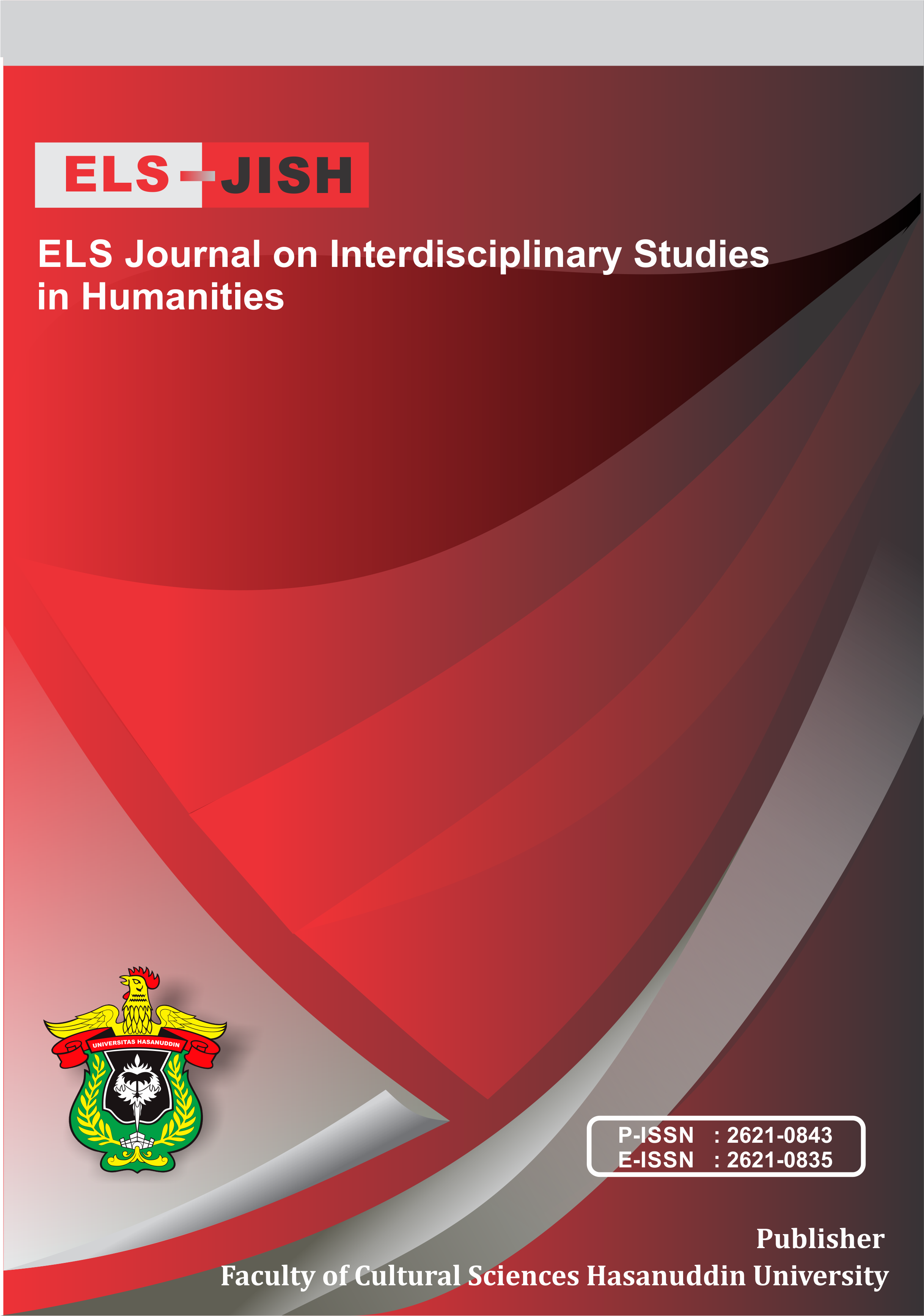Risk-taking and Self-actualization in EFL Positive Classroom Environment
DOI:
https://doi.org/10.34050/elsjish.v3i3.10877Keywords:
self-actualization, risk-taking, EFL, positive classroom environmentAbstract
This study expresses a positive classroom environment depending on two axes; physical setting of the classroom and the role of the teacher as a positive atmosphere creator. By applying the proposed environment, the study tries to discover the impact of it on EFL college students’ self-actualization and risk-taking. To obtain the objectives and to verify a hypothesis, an experimental design was applied by using two groups, experimental and control. The sample of the study consists of sixty EFL first stage college students divided into two groups, each of which is thirty. The first group is the experimental, which is taught in a positive classroom environment as stated by this study. The second group is the control one, which is taught traditionally by letting the classroom as it is, without any positive addition. Two measurement tools have been used; a scaled questionnaire that has been adapted from Stephen D. Luft (2007), and a self-actualization scale that is developed by Jones & Crandall (1986).Using a t-test for the two independent samples shows notable effects on EFL college students’ risk-taking and self-actualization. Based on the results obtained, educational implications that are concerned with teachers and students have been put forward.
References
Al Shlabi, M. F. (2003). Study of theories of personality and learning styles: Some implications and sample activities to support curriculum change in higher education TESOL program in Syria (University of Edinburgh)
Al-Obaydi, Liqaa. (2015). The Correlation between Iraqi EFL College Students’ Autonomy and their Classroom Interaction and Academic Performance. Africa Development and Resources Research Institute (ADRRI) journal. 13. 25-38.
Ashouri , A. F. & Fotovatnia, Z. (2010). The effect of learning individual differences on learners’ translation belief in EFL. English Language.
Beebe, L.M. (1983). Risk - taking and language learner. Classroom Oriented Research in Second Language Acquisition. Rowley: Newbury House Publisher.Inc
Brown, D. (2001). Teaching by Principles. Longman: San Francisco State University.
Cai, S. (2010). Curriculum Design, Linguistic Competence and Self-Actualization: A Case Study on English Curriculum Design for Chinese Non-English Major Postgraduates. Creative Education, 1 (3), 184-195.
Couture, M., Desrosiers, J., Leclerc, G. (2007). Self-actualization and Poststroke Rehabilitation. International Journal of Rehabilitation Research, 30 (2), 111-117.
Dufeu, B. (1994) Teaching myself. Oxford: Oxford University Press.
Faraci, P. & Cannistraci, S. (2015). The Short Index of Self-actualization: A Factor Analysis Study in an Italian Sample. International Journal of Psychological Research. 2015;8 (2) 23-33.
Freeman, D. L. & Anderson, M. (2011). Techniques & Principles in Language Teaching. Oxford: Oxford University Press.
Gass, Susan &Selinker, Larry (2008). Second Language Acquisition: An introductory course. third edition. New York: Rout ledge.
Gebhard, J. G. (2006). Teaching English as a Foreign or Second Language. Michigan: The University of Michigan Press.
Grubough, S. & Houston, R. (1990), Establishing a Classroom Environment than promotes interaction and improved student Behavior, The clearing House, 63 (8)
Jena, P. and Dorji, R. (2016). Self-actualization and value orientation among primary school teachers in Bhutan. World Scientific News, WSN 54, 217-239
Jones, A., & Crandall, R. (1986). Validation a Short Index of Self-actualization. Personality and Social Psychology Bulletin, 12, 63-73.
Johnson, K. & Johnson, H. (1999). Encyclopedic Dictionary of Applied Linguistics. Malden: Blackwell Publishers Ltd.
Karimi, M. & Biria, R. (2017) Impact of Risk-taking Strategies on Male and Female EFL Learners’ Test Performance: The Case of Multiple-Choice Questions. Theory and Practice in Language Studies. 7 (10).
Lee, W. & Ng, S. (2010). Reducing student reticence through teacher interaction strategy. ELT Journal, 64 (3) 302–313, https://doi.org/10.1093/elt/ccp080
Luft, S. D. (2007). Language Classroom Risk-taking Behavior in a Performed Culture-based Program (Unpublished master’s thesis). Ohio State University, Columbus, OH.
Maslow, A. H. (1943). A theory of human motivation. Psychological Review, 50, 370-396. Doi:10.1037/h0054346
Maslow, A. H. (1987). Self-actualizing people. Beijing, Beijing: Sdx- joint Publishing Company.
Maslow, A. H. (2003). Realizing the value of life. Hohhot, CH: Inner Mongolia People’s Publishing House.
Maybury, K. K. (1913). The Influence of Positive Psychology Course on Student’s Well-Being. Teaching of Psychology, 40(1), 62-65.
Meriem, B. (2015). The Effects of Risk Taking on the Learning of Spoken English at University. EXPRESSIONS. n 1, June 2015-pp 84-94.
Nadezhda A., Marina A., Natalya F., Tatyana V., and Tatyana G. (2017). Formation of Students’ Professional Self-Actualization in Modern Educational Environment. Journal of Social Studies Education Research. 8 (2), 161-177.
Nunan, D. & Bailey, K. (2009). Exploring Second Language Classroom Research. Bosten: Heinle.
Oxford, R. (1992). Who are our students? A synthesis of Foreign and Second Language Research on Individual Differences with Implications for Instructional Practice. TESL Canada Journal, 9 (2), 30-48.
Richard, J. & Schmidt, R. (2002). Longman Dictionary of Language Teaching and Applied Linguistics. Essex: Pearson Education Limited.
Richard, J. C. & Renandya, W. A. (2002) Methodology in Language Teaching. Cambridge: Cambridge University Press.
Riski, H., Rahman, F., and Sadik, A. (2018). Improving the Students’ Speaking Ability through Silent Way Method at Smu Negeri 12 Makassar. JURNAL ILMU BUDAYA, 6(2), 303-312
Vukovic, K. (2015). Relationship Between Grammar Learning Strategies and Risk-taking in EFL Learners. Diplomski studij engleskog jezka knjizevnoti. Filozofski fakulet.
Yule, G. (2010). The Study of Language. Cambridge: Cambridge University Press
Young, R. D. (1991) Risk-Taking in Learning K-3. ERIC: A National Education Association.
Downloads
Published
Issue
Section
License

This work is licensed under a Creative Commons Attribution-NonCommercial 4.0 International License.






